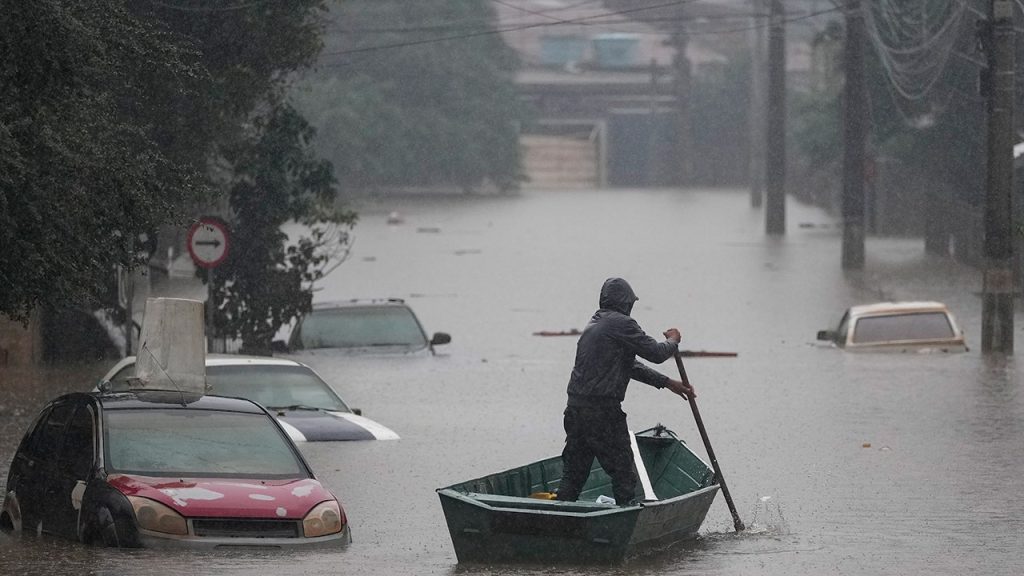Southern Brazil experienced severe flooding that killed at least 161 people and displaced over 600,000 residents from their homes, with 82 still missing. The flooding also led to the deaths of the first two reported cases of waterborne bacterial diseases in the region. A 33-year-old man and a 67-year-old man succumbed to leptospirosis, with experts warning of more fatalities to come due to the contamination of floodwaters with sewage. Health authorities are concerned about an increase in infectious diseases following the disaster, especially as people may be forced to use water from potentially unsafe sources.
The flooding caused widespread damage to infrastructure, affecting over 3,000 health establishments in Rio Grande do Sul state. The outbreak of leptospirosis cases was expected due to the large number of people exposed to contaminated water, as well as other potential diseases. The government is working to provide prophylaxis for infectious diseases and guidance to residents returning home on how to minimize risks of exposure to contaminated water. The interruption of health services can have long-term consequences for patients with chronic diseases who are unable to access necessary treatment or medication during and after the disaster.
Among those affected by the flooding are residents who have been left stranded in shelters, with limited access to clean water and proper sanitation facilities. Experts warn that the lack of potable water could lead to further health complications as people are forced to use potentially contaminated water sources. The unprecedented scale of the disaster has posed significant challenges to local health departments in providing essential services and care to residents in need, many of whom have been displaced or separated from their access to medication or treatment for chronic illnesses.
Health experts are bracing for a surge in infectious diseases, including leptospirosis and hepatitis B, following the flooding in southern Brazil. The contaminated floodwaters and disruption of health services have created conditions favorable for the spread of waterborne diseases. The large population exposed to contaminated water and other environmental hazards poses a significant challenge to public health officials in mitigating the impact of the disaster. Despite the challenges faced by health authorities in responding to the crisis, efforts are being made to provide necessary prophylaxis and guidance to minimize the risks of further health complications among residents returning home.
The aftermath of the flooding in southern Brazil has raised concerns about the potential for additional deaths from waterborne diseases and other health complications. Health experts emphasize the importance of maintaining access to clean water and sanitation facilities to prevent further outbreaks of infectious diseases. The disruption of health services and infrastructure poses challenges in providing care and treatment to residents, particularly those with chronic diseases who may be at risk without access to medication or medical attention. Authorities are working to address these challenges and ensure the health and safety of residents affected by the disaster.
The devastating flooding in southern Brazil has had far-reaching impacts on public health, with the outbreak of waterborne diseases and other health complications adding to the challenges faced by residents in the aftermath of the disaster. The disruption of critical infrastructure and health services has placed additional strain on efforts to respond to the crisis and provide necessary care to those in need. Despite the unprecedented scale of the disaster, health authorities are working to address the immediate public health concerns and mitigate the risks of further outbreaks of infectious diseases. The ongoing efforts to provide prophylaxis and guidance to residents affected by the flooding reflect a commitment to safeguarding the health and well-being of those impacted by the disaster.


